Luxury meets practicality as master bathrooms continue to evolve with fresh design trends that prioritize comfort, space efficiency, and wellness. From statement lighting and textured materials to high-tech upgrades and freestanding tubs, these updates are reshaping how homeowners experience daily routines. Personalized layouts, spa-inspired finishes, and warm minimalism are replacing outdated designs with features that feel both elevated and livable. With an increasing focus on self-care and mindful design, the latest trends make it easier than ever to turn your master bathroom into a functional sanctuary. This guide highlights what’s new, what’s timeless, and what’s worth investing in right now.
Tile Drenching with Matte Finishes

Walls and floors covered in the same matte tile finish provide a clean, grounded aesthetic with a unified flow. This technique works especially well in organic modern bathrooms where subtle textures and finishes lead the design narrative. Matte surfaces not only reduce glare but also give off a soft, natural elegance that aligns with earthy design principles. The lack of shine allows the material’s inherent color and texture to take center stage, particularly in muted shades like sand, clay, and charcoal. Floor-to-ceiling tile drenches can make a space appear taller and more cohesive, especially when applied to enclosed shower zones or entire feature walls. Pairing with minimalist fixtures and muted lighting completes the serene atmosphere. Unlike glossy counterparts, matte tiles resist watermarks and fingerprints, making them ideal for low-maintenance luxury. For a grounded, spa-like vibe that feels contemporary yet timeless, matte tile drenching offers both form and practical function.
Natural Spa Vibes
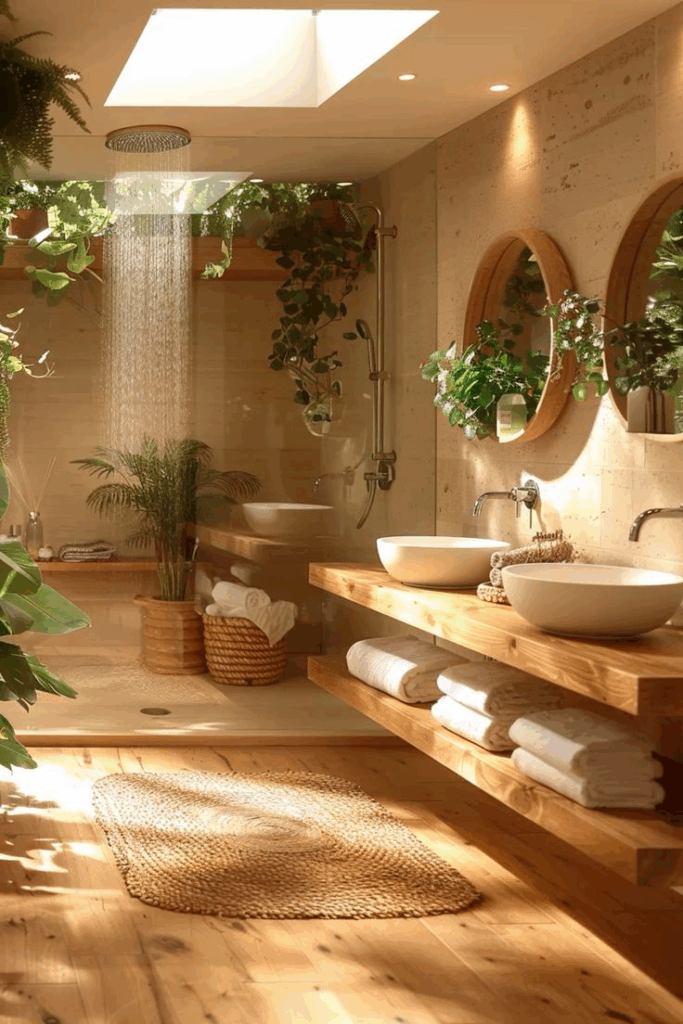
Wood tones, natural textures, and plant-inspired elements set the mood for a space that mimics boutique spa environments. Think teak wood stools, light bamboo shelving, and neutral stone finishes—all choices that bring calming energy and wellness-inspired design. Subtle aromatherapy stations and soft linen textiles also contribute to this sensory relaxation. Open shelving with apothecary-style jars filled with bath salts, loofahs, or dried herbs not only looks appealing but adds function with flair. Earth-toned palettes like sage green, ivory, and sand promote tranquility without feeling washed out. Potted greenery, especially moisture-loving species like ferns or peace lilies, complete the look by infusing life and color. Rainfall showerheads and stone footbeds also enhance the experience, echoing nature’s tactile pleasures. Soft, diffused lighting—especially in amber or warm white—heightens the ambiance. A natural spa environment does more than please the eye; it subtly calms the senses, creating a home oasis that feels both intentional and rejuvenating.
Sensorial Design
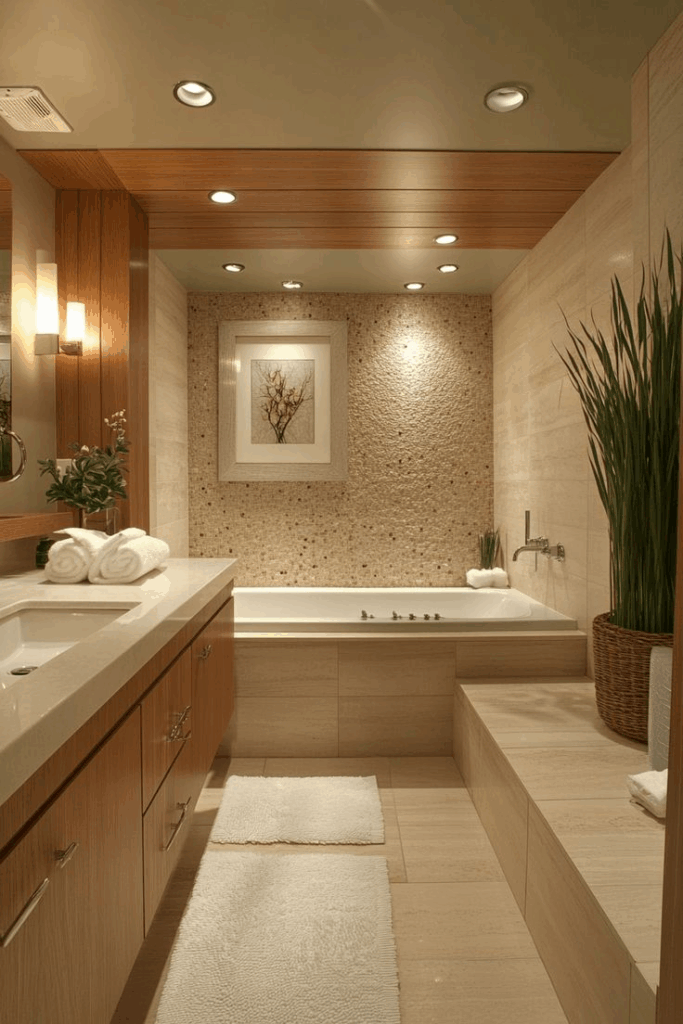
Designing with the senses in mind involves much more than visual aesthetics—it’s about texture, sound, scent, and temperature. Stone textures underfoot, warm wood tones, and soft organic cotton linens can completely shift how a bathroom feels. Wall niches lined with textured tile or sculptural clay installations encourage tactile engagement, while dimmable lighting sets an adjustable tone for different times of day. Subtle sound elements, like a small tabletop fountain or water feature, add a relaxing acoustic layer. Scented candles or essential oil diffusers further amplify the sensorial journey, inviting mindfulness. Sensorial design also emphasizes temperature control—heated floors, towel warmers, and thermostatic mixers personalize comfort. Window placement or skylights offer dynamic natural light, shifting the mood throughout the day. By intentionally layering sensory inputs, the bathroom becomes more than a utility space—it evolves into an immersive wellness zone where every detail contributes to comfort and emotional ease.
Spa-Inspired Retreats
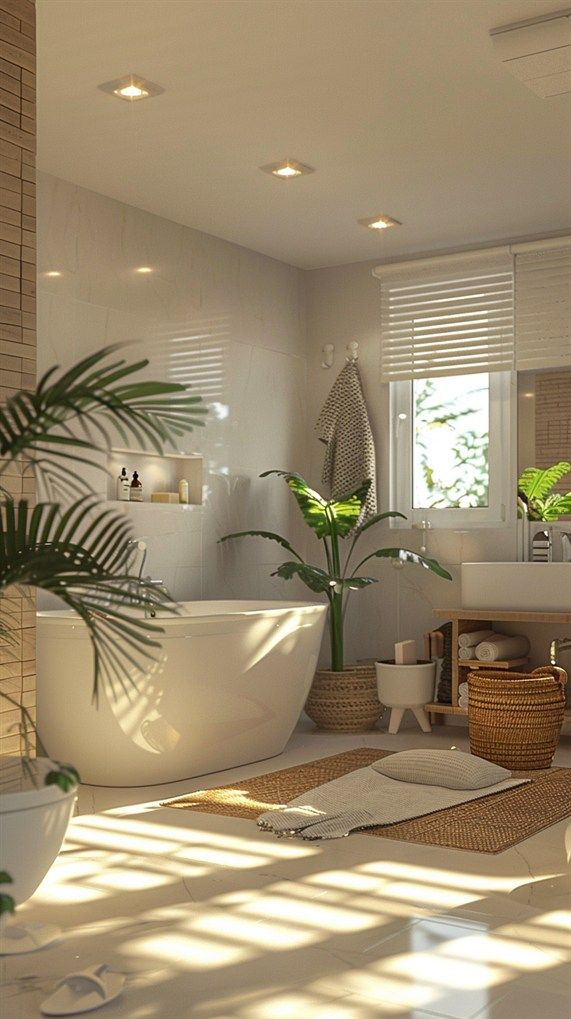
Designing for daily renewal means crafting a space that echoes the luxury of a high-end spa. Think built-in seating for long showers, plush towels stacked on open wood shelving, and a freestanding soaking tub as the central focus. Lighting plays a major role here—soft pendant lights, wall sconces, or hidden LED strips highlight key architectural elements without overwhelming the space. Material choices lean toward warm, organic elements like textured stone, smooth wood, and brushed brass. Carefully chosen accessories, from woven baskets to ceramic jars, add a curated touch while remaining practical. Neutral tones dominate, but layered textures prevent monotony, balancing serenity with depth. Built-in aromatherapy diffusers or sound therapy systems enhance the atmosphere, encouraging you to slow down and recharge. This retreat-style setup is designed for intentional rituals, whether it’s a morning refresh or an evening soak. A spa-inspired bathroom becomes a personal sanctuary that supports daily self-care routines.
Wet Rooms
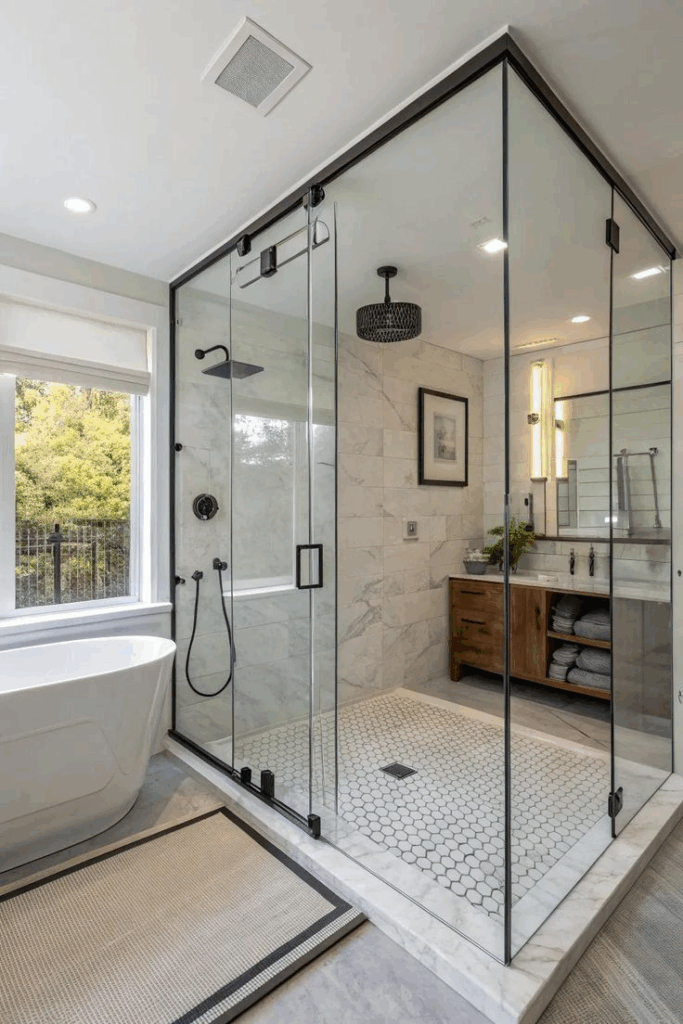
Open-concept wet rooms blur the boundaries between shower, tub, and bathroom floor, offering an airy, minimalist feel. By eliminating visual barriers like shower trays or raised curbs, the entire space becomes accessible and fluid. Floor tiling with proper slope ensures effective drainage, while wall-mounted fixtures maintain a sleek footprint. This layout is especially beneficial for small bathrooms or aging-in-place design, as it provides enhanced mobility without sacrificing style. Glass panels can still be used strategically to prevent splash zones without boxing in the room. Textured tile choices add both slip resistance and visual warmth, while integrated shelving niches keep essentials within reach. Wet rooms also allow for cohesive material palettes—extending the same tile across walls, floors, and shower zones amplifies continuity. With proper waterproofing and drainage systems in place, wet rooms offer a contemporary solution that aligns with both organic aesthetics and practical modern living.
Sustainable Materials
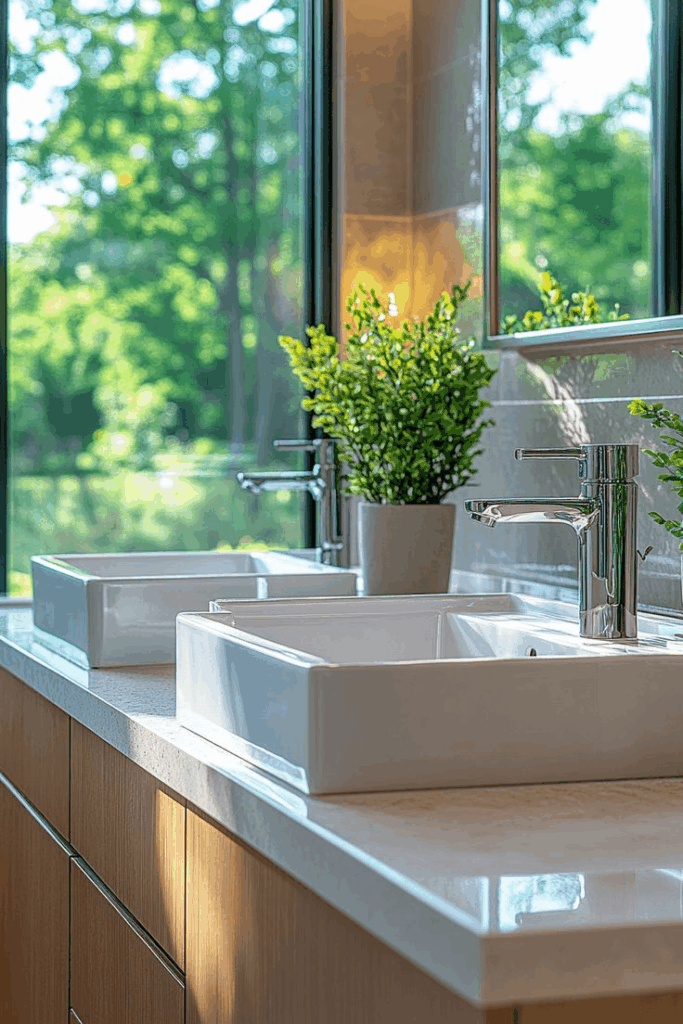
Prioritizing eco-conscious design starts with mindful material selection. Bamboo, reclaimed wood, recycled glass tiles, and natural stone surfaces all serve both the environment and aesthetic appeal. These elements not only reduce environmental impact but also offer rich, organic textures that feel timeless. Recycled or low-VOC paints and sealants contribute to healthier indoor air, while water-efficient fixtures cut down on resource consumption without compromising functionality. Concrete basins, sustainably harvested timber vanities, and cork flooring are additional sustainable choices that don’t sacrifice visual interest. Beyond materials, sustainable design often incorporates passive lighting and ventilation—think skylights, transom windows, or louvered panels that reduce the need for artificial light. Choosing long-lasting fixtures and avoiding overly trendy elements also supports environmental responsibility by minimizing waste over time. An organic modern bathroom gains true integrity when it reflects values of longevity, natural beauty, and environmental stewardship. Sustainability is no longer optional—it’s foundational to mindful design.
Mixed-Metal Finishes
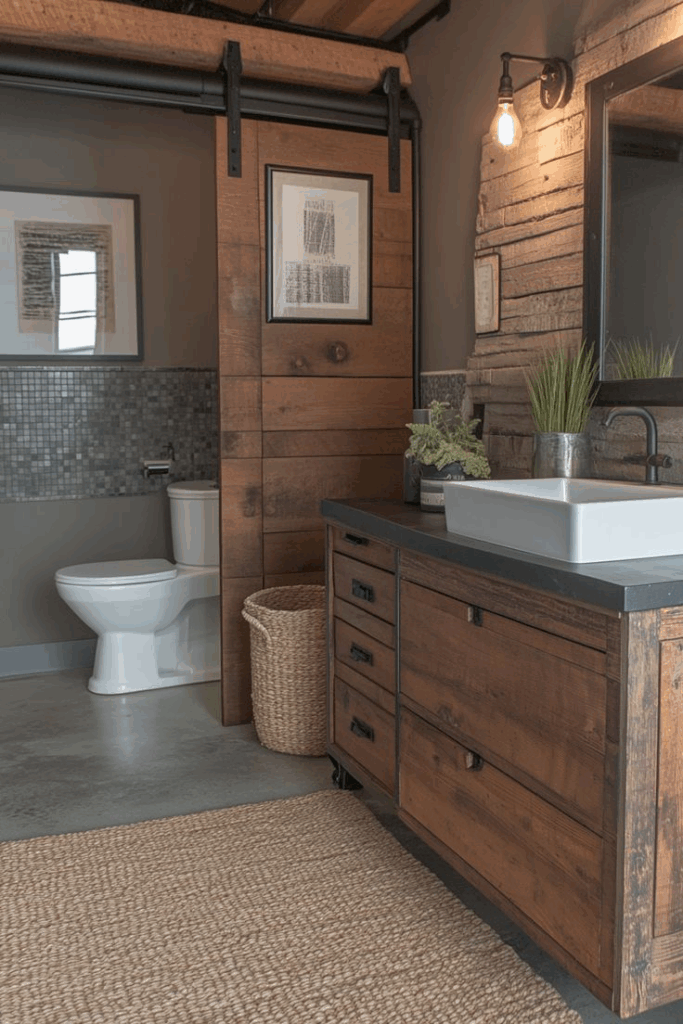
Combining various metal finishes introduces depth, contrast, and tactile interest to bathroom fixtures and accents. Brass faucets paired with matte black towel bars or brushed nickel sconces can coexist beautifully when done with intentional spacing and repetition. This layered approach avoids visual monotony and brings a collected, lived-in look to modern organic bathrooms. The trick lies in balance—select one metal as the dominant finish, then introduce one or two others as supporting accents. For example, a bronze-framed mirror can pair well with stainless hardware if connected through lighting or accessories. Wood and stone soften the visual weight of the metals, making the mix feel grounded rather than industrial. Texture also plays a role—brushed or antique finishes offer a more organic vibe than highly polished ones. This approach allows personalization without overpowering the space. When thoughtfully applied, mixed-metal elements reflect an effortless blend of warmth, texture, and functional detail.
Bold Tile Choices

Opting for strong patterns or colors in tilework makes a distinctive statement in an otherwise neutral, organic setting. Think geometric layouts, hand-painted ceramic tiles, or oversized terra cotta pieces that draw the eye without overwhelming the senses. Rather than covering entire walls, these tiles often function best as strategic accents—on shower walls, behind the vanity, or along a bathtub surround. Natural tones like clay, forest green, and charcoal provide depth without clashing with the earthy foundation of organic modern design. Texture also matters—matte, handcrafted finishes keep things grounded and artisanal. Tile with variation in tone or glaze adds character, enhancing the lived-in, organic feel. Mixed-scale mosaics or vertical stacks create visual interest while maintaining a calm palette. When used with restraint, bold tile becomes a defining feature that energizes the space and adds architectural rhythm, making the bathroom feel curated rather than clinical.
Smart Technology Integration
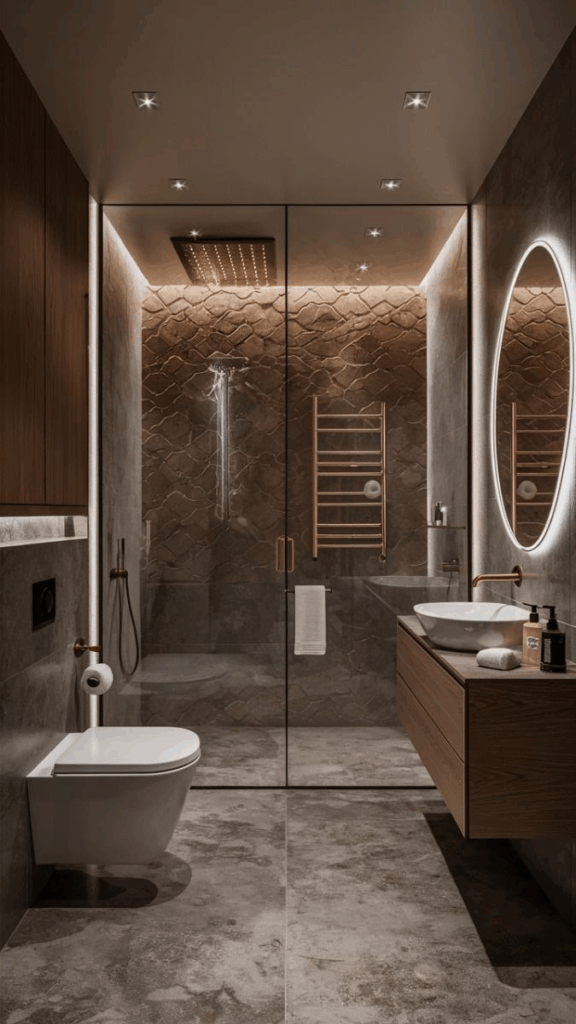
Technological upgrades are seamlessly finding their way into organic modern bathrooms, enhancing both efficiency and comfort. Motion-sensor faucets, temperature-adjustable LED mirrors, and programmable shower systems now blend into natural environments without feeling intrusive. The focus is on hidden functionality—think underfloor heating that stays invisible yet provides tactile warmth, or app-controlled lighting systems that let you set custom moods from your phone. Even ventilation can be managed through humidity-sensitive exhaust fans, promoting indoor air quality. Materials used in tech elements are kept minimal and modern—brushed aluminum, matte black, or warm brass—so they blend effortlessly with wood, stone, and linen textures. Voice-activated assistants and Bluetooth-enabled speakers add convenience for music or hands-free commands during morning routines. Smart design in this setting prioritizes user experience without disturbing the visual serenity of the space. It’s all about quiet innovation—technology that enhances the organic feel without becoming the centerpiece.
Curbless Showers
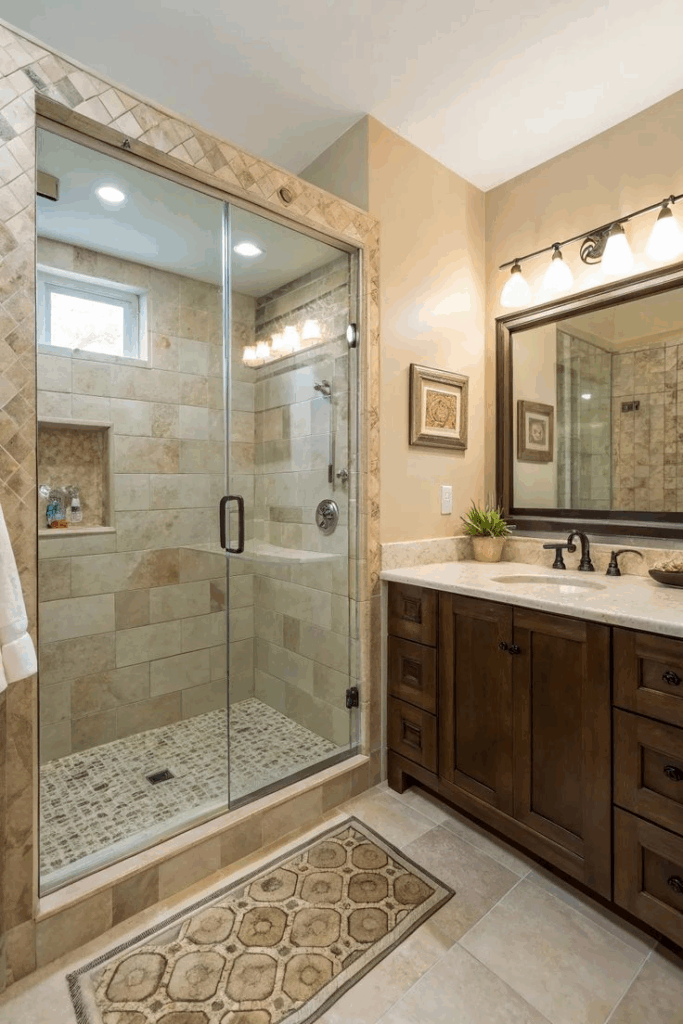
Blending the shower floor into the rest of the bathroom creates an uninterrupted visual plane that feels open and luxurious. This design eliminates traditional raised edges, relying instead on precision sloping and linear drains for efficient water flow. Not only does this layout align with minimalist aesthetics, but it also improves accessibility for all age groups. The continuity of tile—from the main floor into the shower zone—makes the space appear larger and more unified. Frameless glass partitions or even open shower designs further enhance the fluidity. Curbless showers are particularly well-suited to organic modern themes because they allow materials like textured stone, raw concrete, or natural ceramic to take the spotlight without interruption. Fixtures are typically wall-mounted to minimize visual clutter, while recessed niches keep bath products discreetly tucked away. This clean, functional design isn’t just beautiful—it’s forward-thinking, offering elegance with everyday usability in mind.
Warm, Earthy Tones

Grounding a bathroom in earthy hues builds an immediate connection to nature. Think shades like terracotta, sandy beige, olive green, and clay brown—all of which invite warmth and calm without relying on stark contrasts. These tones work beautifully with tactile surfaces like plaster walls, unpolished stone tiles, or raw wood cabinetry, allowing natural textures to breathe. Lighting plays a supportive role here, with warm bulbs that amplify the color palette rather than compete with it. In textiles, linen or cotton in muted ochres or rust hues extend the color story while remaining subtle. These shades also pair effortlessly with live plants and organic accessories like woven baskets or clay vessels. Unlike sterile all-white bathrooms, warm palettes offer a lived-in elegance that feels soulful and curated. For those seeking a palette that soothes while remaining grounded in modern design, warm, earthy tones provide a timeless and nurturing foundation.
Statement Wallpapers
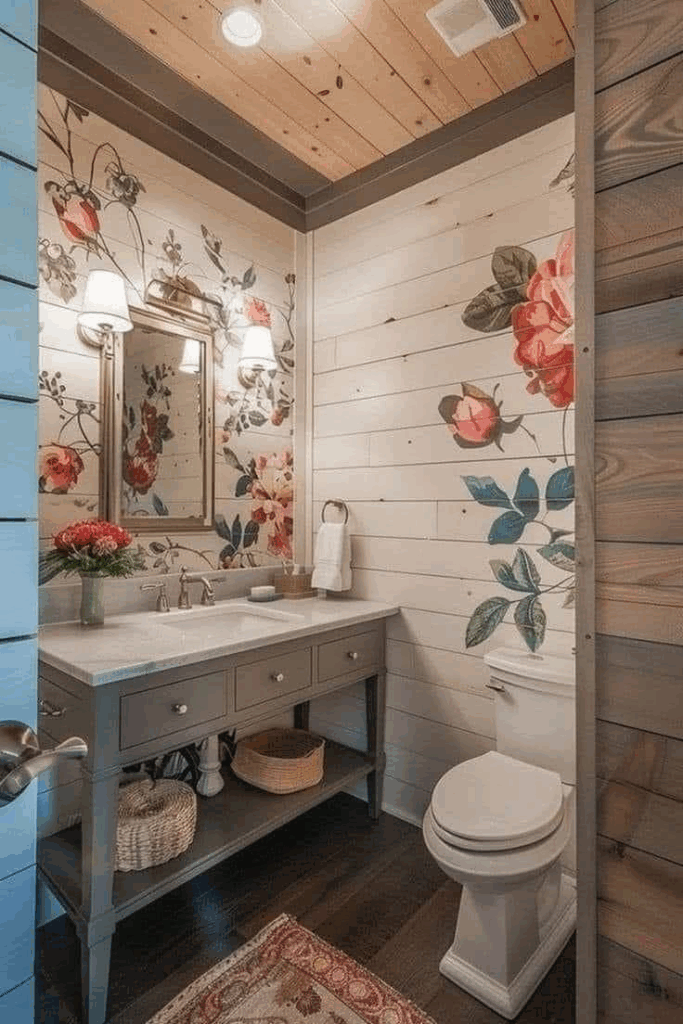
In an organic modern space, wallpaper becomes less about prints and more about natural expression. Textured options like grasscloth, hand-painted murals, or botanical-themed patterns offer a sophisticated contrast to the clean lines of modern fixtures. Rather than dominating every wall, statement wallpaper is often reserved for accent areas—behind the vanity, around a freestanding tub, or on a partial wall to add visual rhythm. Earth-toned designs in subtle greens, browns, or ivory tones ensure the space remains grounded while still showcasing personality. For moisture-prone areas, high-quality, vinyl-coated papers with natural-looking finishes provide both durability and style. Some designs mimic the texture of plaster, linen, or woven fibers, delivering tactile dimension without needing real materials. Used thoughtfully, wallpaper brings visual softness, artistic depth, and a sense of intimacy to the bathroom. It becomes less about bold patterns and more about meaningful, curated moments within a calm, cohesive setting.
Floating Vanities
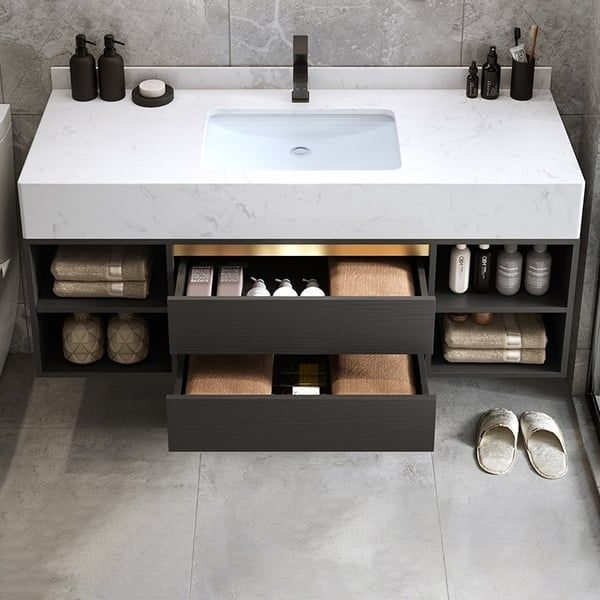
Wall-mounted vanities offer the illusion of more space while promoting a clean, open look. They’re especially valuable in smaller bathrooms or designs focused on visual simplicity. The gap between the vanity and the floor introduces light flow and offers a chance to showcase tile or wood flooring uninterrupted. Materials like natural oak, walnut, or bamboo keep the aesthetic grounded, while stone or concrete sinks add a refined touch. Hardware in matte black or brushed brass adds detail without stealing the spotlight. Storage remains essential—deep drawers or open shelving beneath the basin ensure functionality isn’t compromised. Integrated sinks or vessel basins atop minimalist countertops can make a floating vanity feel custom and elevated. Floating vanities align perfectly with organic modern ideals by balancing utility with aesthetics, offering clean geometry without clutter. They provide both function and airiness, enhancing the spa-like ambiance while maintaining architectural clarity in design.
Integrated Storage Niches

Recessed shelving is a practical, visually unobtrusive way to store essentials in style. In showers, these niches eliminate the need for bulky caddies or corner racks, instead offering a sleek space to hold soaps, bottles, and accessories. When aligned with tile grout lines or framed in complementary stone, these elements feel intentionally designed rather than retrofitted. Placement matters—horizontal niches along full walls can double as subtle design accents, while vertical niches work well in tighter spaces. In dry zones, niches can be integrated near vanities to hold candles, perfumes, or small planters. Material contrast, such as wood-lined interiors against stone walls, enhances the visual depth. These features reduce visual clutter, especially in bathrooms favoring a streamlined organic look. Smartly integrated, they support both minimalist sensibilities and everyday functionality. With careful design, storage niches become part of the architecture rather than an afterthought, delivering elegant efficiency without sacrificing warmth.
Backlit Mirrors
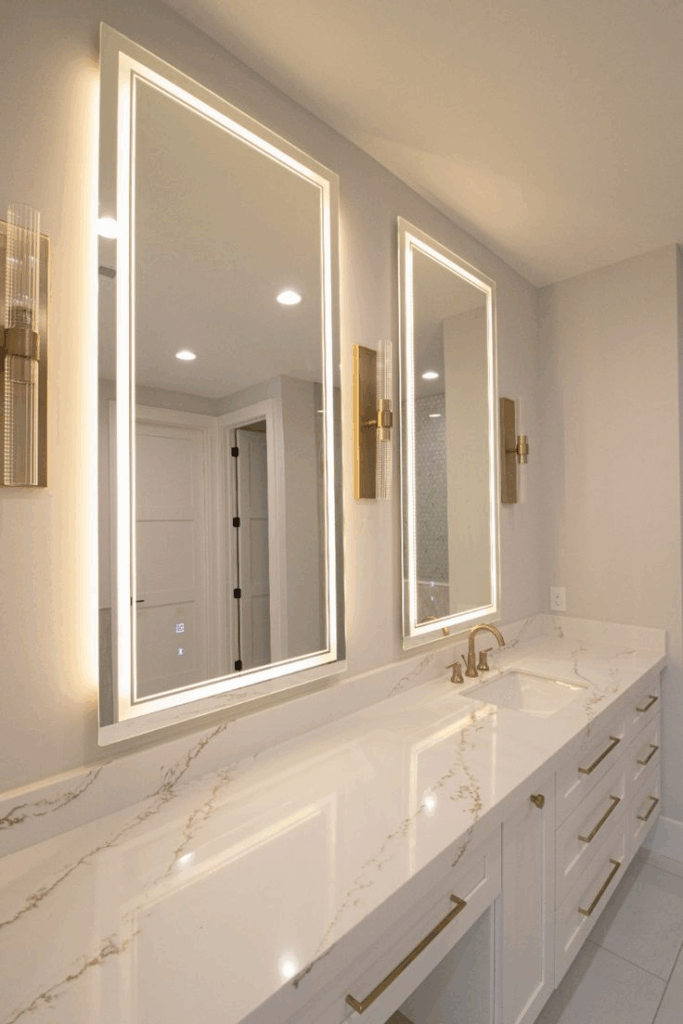
Light plays a transformative role in bathroom ambiance, and backlit mirrors offer one of the most refined approaches. Rather than relying on overhead lighting alone, these fixtures emit a soft, diffused glow around the mirror’s perimeter, eliminating harsh shadows during grooming routines. LED backlights are energy-efficient and often dimmable, letting users tailor the brightness to time of day or mood. Framing options vary from wood to metal, but in an organic modern setting, thin frames or frameless mirrors maintain a streamlined look. The glow adds subtle drama while serving a practical purpose—illuminating the face without visual clutter. Paired with stone or plaster walls, the backlit silhouette creates architectural interest. Some versions even integrate defogging or smart controls for convenience. These mirrors elevate daily rituals while preserving a calming, nature-forward palette. In spaces seeking serenity and precision, the glow of a backlit mirror delivers modern technology in the softest, most welcoming form.
